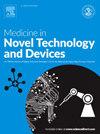Additive manufacturing in bone science: A cutting-edge review of its potential and progress
Q3 Medicine
引用次数: 0
Abstract
In the medical industry, additive manufacturing, or AM, sometimes referred to as 3D printing, has completely changed bone regeneration and healing. With the use of this technology, complex scaffolds and implants that nearly resemble natural bone structures may be created. Orthopedic patient-specific solutions may be created by utilizing a variety of AM processes, including as fused deposition modeling, stereolithography, and selective laser sintering. Compared to conventional bone grafting techniques, AM lowers risks while promoting cellular development, differentiation, and osseointegration. When bioactive chemicals are used with biocompatible materials like metals, ceramics, and polymers, bone tissue engineering becomes even more effective. The potential of AM in bone regeneration is reviewed in this research along with an analysis of its uses, benefits, and new materials. Issues including material constraints, expenses, and regulatory issues are discussed, and suggestions for more study are included. AM has the potential to significantly improve clinical procedures and patient outcomes by revolutionizing the fields of bone tissue engineering and orthopedic implants.
骨科学中的增材制造:其潜力和进展的前沿综述
在医疗行业,增材制造,或AM,有时被称为3D打印,已经完全改变了骨再生和愈合。利用这项技术,可以制造出与天然骨结构相似的复杂支架和植入物。通过利用各种增材制造工艺,包括熔融沉积建模、立体光刻和选择性激光烧结,可以创建骨科患者特定的解决方案。与传统的骨移植技术相比,AM降低了风险,同时促进了细胞的发育、分化和骨整合。当生物活性化学物质与金属、陶瓷和聚合物等生物相容性材料一起使用时,骨组织工程变得更加有效。本文综述了AM在骨再生中的潜力,并对其用途、益处和新材料进行了分析。讨论了材料限制、费用和监管问题等问题,并提出了进一步研究的建议。增材制造技术通过彻底改变骨组织工程和骨科植入物领域,有可能显著改善临床程序和患者预后。
本文章由计算机程序翻译,如有差异,请以英文原文为准。
求助全文
约1分钟内获得全文
求助全文
来源期刊

Medicine in Novel Technology and Devices
Medicine-Medicine (miscellaneous)
CiteScore
3.00
自引率
0.00%
发文量
74
审稿时长
64 days
 求助内容:
求助内容: 应助结果提醒方式:
应助结果提醒方式:


